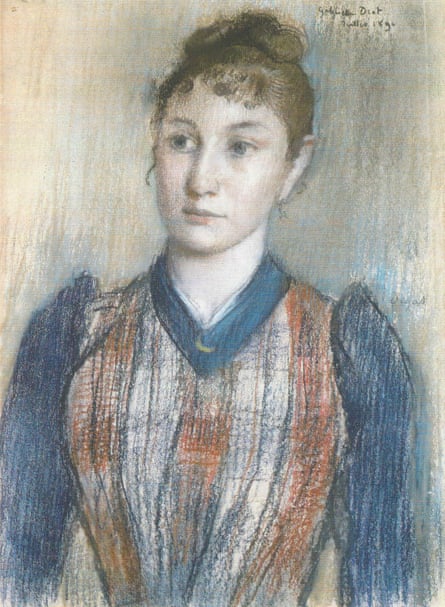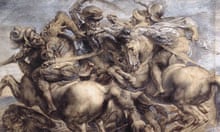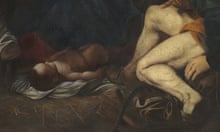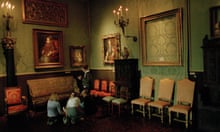Somebody, somewhere knows its location. But the one man who could help is refusing to talk. Portrait of Mlle. Gabrielle Diot (1890), a painting by Edgar Degas, hung above the desk of a renowned Jewish art dealer at his Paris gallery until 1940 when, along with numerous other works, it was confiscated by the Nazis.
Now, the descendants of Paul Rosenberg have hired London-based art detectives to try to recover it, almost 60 years after the art dealer’s death. “It’s not impossible that somebody has seen it,” said Marianne Rosenberg, Paul’s granddaughter. “We reserve the right to seek recourse to the law in all jurisdictions.”
Paul Rosenberg, a patron to both Henri Matisse and Pablo Picasso, whom he affectionately called “Pic”, kept meticulous records of the works in his keeping, a practice that has greatly helped his family over the years in its quest to reclaim them. Of the 400 or so works looted from his gallery, only 65 have yet to be recovered, according to Marianne.
Many of the pieces were loaded on to a train that was stopped outside Paris in August 1944 by a unit of the Free French forces led by Lieutenant Alexandre Rosenberg, Paul Rosenberg’s son, an intervention depicted in the 1964 film The Train, starring Burt Lancaster.

But the 1890 Degas was not among them, and its whereabouts since the theft by the Nazis have been a mystery. The painting first resurfaced in 1974, when a Hamburg-based art dealer, Mathias Hans, is said to have brokered its sale to a Swiss buyer. It next appeared in December 1987, when Elaine Rosenberg, Paul Rosenberg’s daughter-in-law, found it in an art magazine, listed for sale by the Hans Gallery in Hamburg. When she contacted the gallery to say that it had been looted, Hans said confidentiality rules prevented him from disclosing who possessed it.
Further attempts to sell the picture were made, through intermediaries in Denmark, Germany, California, New York and Venice, according to investigators hired by the Rosenberg family.
At one stage, Hans suggested the family pay compensation of €3m, which incensed Marianne Rosenberg. “If you buy a painting from a dealer and it turns out the painting is either stolen or fake, it is market practice that the dealer must reimburse you,” she said. “So if the person is claiming compensation, the person to compensate him is Mr Hans.”
Of all the works plundered from Rosenberg’s Paris gallery, the looted Degas – described by Marianne Rosenberg as “exquisite” – has proved the most difficult to recover.
The German government signed up to the Washington Principles, 20 years old next month, which oblige the authorities to help return artworks stolen by the Nazis to their rightful owners, and its culture ministry did contact Hans requesting his cooperation.
However, Christopher Marinello, founder of Venice-based Art Recovery International, representing the Rosenberg heirs, says it could have gone further: “It was a half-hearted effort at best. There is so much more the German authorities could investigate here, including purchase, tax and export records. Germany is not only responsible for the actions of their predecessors, but responsible for the standards it projects today. When the government doesn’t lead by example, it gives the art market an excuse to do the bare minimum in halting the trade in looted artwork.”
In a statement to the Observer, Hans accused Marinello of intimidation, and of setting the “entire press machinery” on him. “I am very sorry that the Rosenberg family suffered injustice under the Nazi regime. I am also very sorry that I could not obtain the return of the portrait, but I have always acted as a mediator.”
Hans added that the decision about what to do with the painting was not his to make, and that he would not say who now possessed the painting.
Marianne Rosenberg said she was hopeful the family’s decision to go public with their request for the return of the Degas might now jog someone’s memory. She stressed their commitment to retrieving all paintings stolen by the Nazis: “The quest for these pictures goes on as it has done for three generations now. Whether they all survived is open to question. Some of them may have been perceived as very avant garde, and burned, and some may have been victims of unfortunate war accidents but I’m sure a large percentage are out there somewhere. They may be in museums or private collections. Who knows?”








